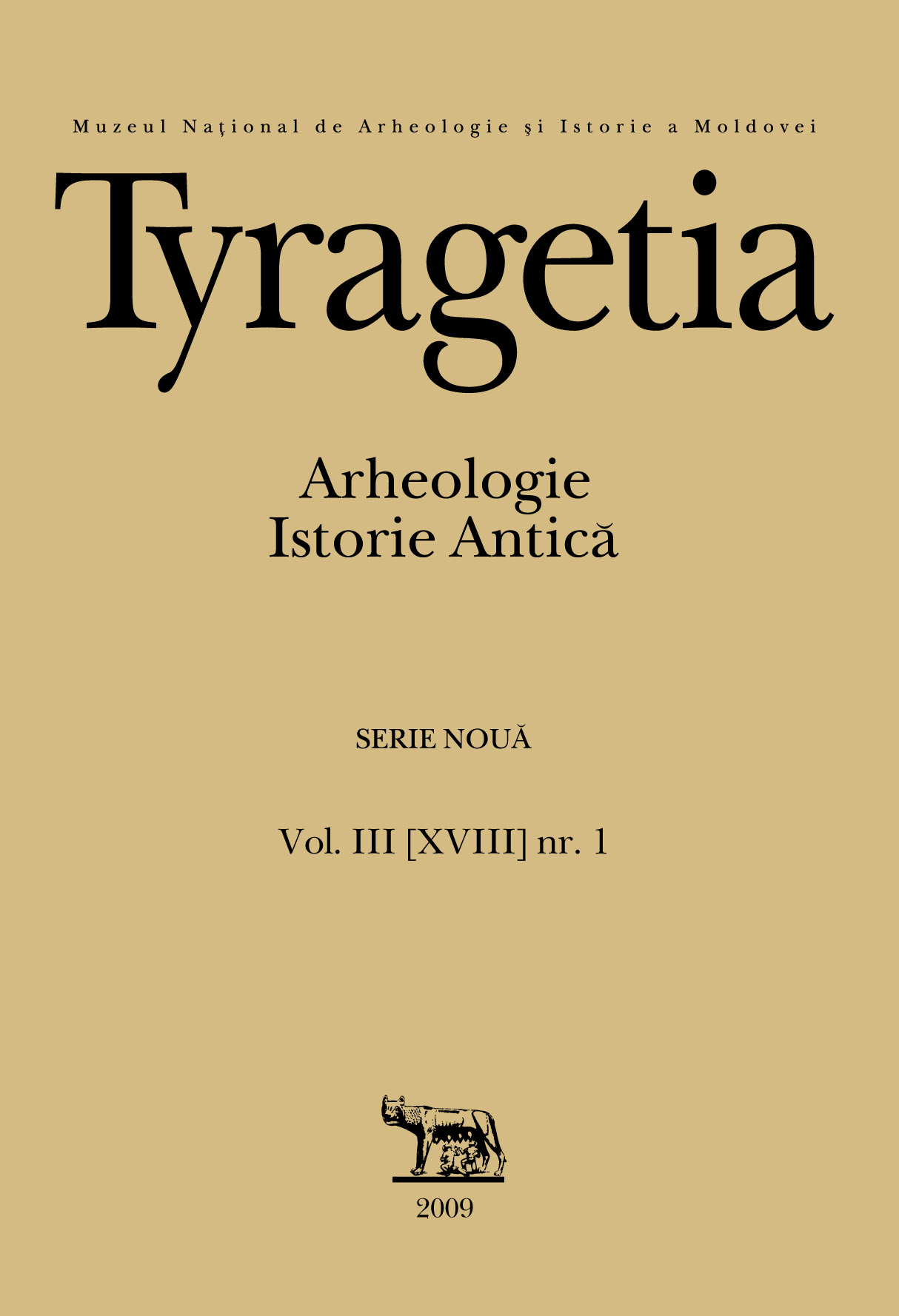Сercetările arheologice de la Buzduganii de Jos, pe valea Ţuţorei, din anul 2008. Consideraţii preliminare
Archaeological researches from Buzduganii de Jos in the Ţuţora Valley conducted in 2008. Preliminary research results
Author(s): Ion Tentiuc, Alexandru LevinschiSubject(s): Archaeology
Published by: Muzeul Naţional de Istorie a Moldovei
Keywords: Ţuţora Valley; archaeological campaign; medieval settlement
Summary/Abstract: The investigation conducted at the site from Ţuţora Valley, on the left side of Prut, revealed two levels of habitat which were well delimited stratigraphically and culturally and were quite consistent and imposing. The lower level belongs to the Iron Age. It is represented by jar-pots, plates and cups, some of them having analogies in the barrows from Trinca. These ceramic categories and fragments of Lesbos amphorae of archaic type dated with the second half - the last quarter of the 6th century BC enable the placement the lower level from the Ţuţora Valley between the middle - the second half of the 7th century and the last quarter of the 6th century BC. Considering the fact that certain types of pots discovered here are found in different regions, we assume that the early settlement from Ţuţora Valley represents a particular cultural phenomenon if compared to those known in the Prut-Dniester space in this period. These arguments entitle us to delimit within the remains of the early Iron Age on the territory between Prut and Dniester a new cultural aspect which we attribute conventionally to the remains of Buzdugani type. The future investigations, the discovery of new materials will confirm or introduce certain corrections to the data presented above. For the upper layer attributed to the medieval period are important the discoveries of some cultural layers, some habitat and funerary complexes dated with the 16th-17th centuries. They confirm the existence of an important medieval settlement in the area of the Ţuţora ford. In the 17th century it became, according to the written documentary sources, an important princely market town. The market town Ţuţora could be located both on the left side and on the right site of Prut. At the same site were discovered and investigated the fortifications of the so-called „Camp of Zamoyskij”, built, according to the written sources, in the year 1595 and rebuilt in 1620. The fortification represented an important defensive point of the ford from Prut and of Ţuţora customs at the crossroad of important international trade routes, and later – the location of the foreign armies in times of complex political-military disorders in the early medieval and pre-modern periods.
Journal: Tyragetia (Serie Nouă)
- Issue Year: III/2009
- Issue No: 1
- Page Range: 247-266
- Page Count: 20
- Language: Romanian

